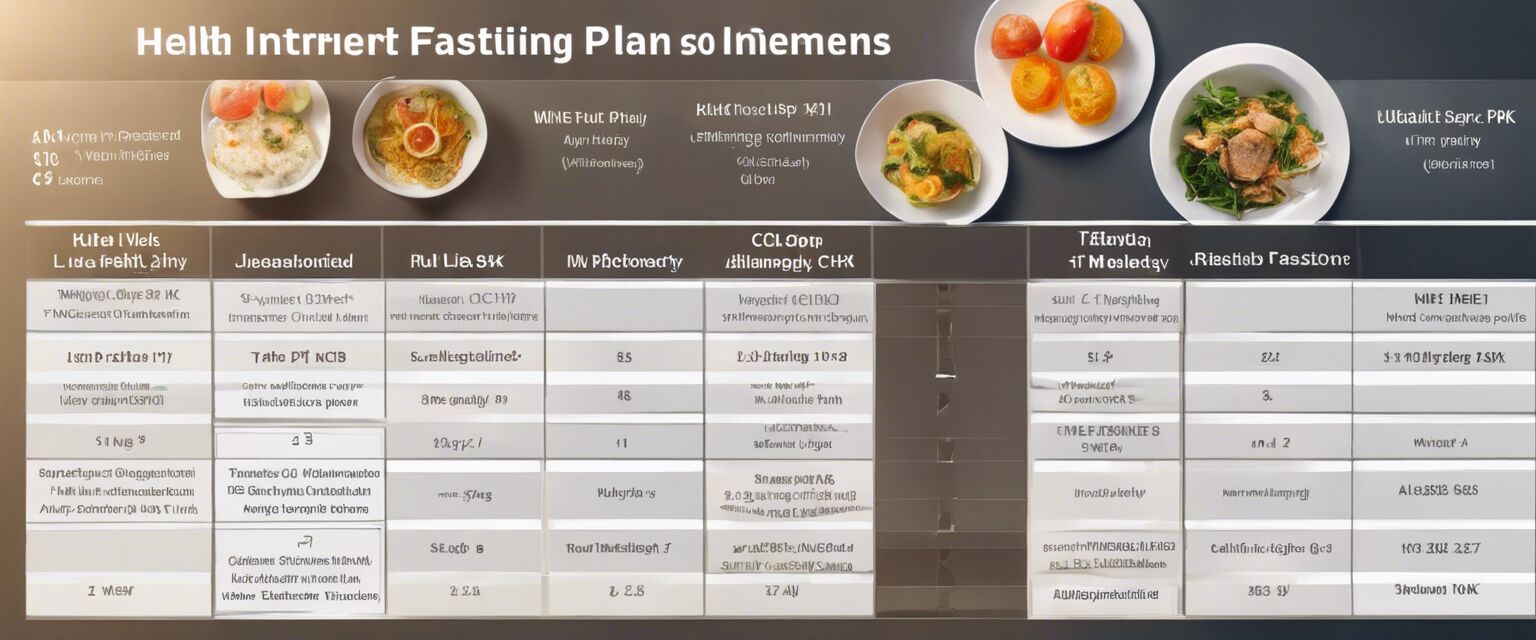
Intermittent fasting for weight loss
Key Takeaways
- Intermittent fasting can help with weight loss when combined with a balanced diet.
- There are various methods of intermittent fasting to suit different lifestyles.
- Staying hydrated and mindful of food choices during eating windows is crucial.
- Regular physical activity enhances the benefits of intermittent fasting.
- Consulting a healthcare provider is advisable before starting any fasting regimen.
Intermittent fasting has gained popularity as a method for weight loss and overall health improvement. This approach focuses on when to eat rather than what to eat, making it an appealing option for many individuals. In this article, we will explore specific strategies and tips for effectively using intermittent fasting to lose weight.
What is intermittent fasting?
Intermittent fasting (IF) is an eating pattern that cycles between periods of eating and fasting. It does not prescribe specific foods but emphasizes the timing of food intake. Here are some of the most common methods:
| Method | Description |
|---|---|
| 16/8 Method | Involves fasting for 16 hours and eating during an 8-hour window. |
| 5:2 Diet | Eat normally for 5 days of the week and restrict calorie intake to about 500-600 calories for 2 days. |
| Eat-Stop-Eat | A 24-hour fast once or twice a week. |
| Alternate-Day Fasting | Fasting every other day, either completely or with limited calories. |
| Warrior Diet | Eating small amounts of raw fruits and vegetables during the day and one large meal at night. |
Benefits of intermittent fasting
Intermittent fasting is associated with several potential benefits that may aid in weight loss:
- May help reduce calorie intake.
- Can improve metabolic health.
- Encourages healthier eating habits.
- May promote fat loss while preserving muscle mass.
Strategies for effective intermittent fasting
To maximize the benefits of intermittent fasting for weight loss, consider the following strategies:
1. Choose the right method for you
Pick a fasting method that fits your lifestyle. If you prefer a flexible approach, the 16/8 method might work best, while those looking for more structure might prefer the 5:2 diet.
2. Stay hydrated
During fasting periods, itâs crucial to drink plenty of water. Staying hydrated can help manage hunger and keep your body functioning optimally.
3. Focus on nutrition during eating windows
Make sure to consume nutrient-dense foods during your eating windows. This includes:
- Lean proteins (chicken, fish, legumes)
- Whole grains (quinoa, brown rice)
- Fruits and vegetables
- Healthy fats (avocado, nuts, olive oil)

4. Incorporate physical activity
Engaging in regular exercise can enhance the effects of intermittent fasting. Aim for a mix of cardio, strength training, and flexibility exercises throughout the week.
5. Listen to your body
Pay attention to how your body responds to fasting. If you feel excessively fatigued or unwell, it might be necessary to adjust your fasting schedule or consult with a healthcare professional.
Tips for beginners
- Start slow: If you're new to intermittent fasting, begin with shorter fasting periods and gradually increase them.
- Keep a journal: Document your hunger levels, energy, and mood to understand how fasting affects you.
- Be patient: It may take time for your body to adjust to a new eating pattern.
- Find support: Joining a community or finding a fasting buddy can help keep you motivated.
- Consult a professional: Always check with a healthcare provider before making significant changes to your diet.
Common challenges and how to overcome them
Embarking on an intermittent fasting journey can come with challenges. Here are some common issues and strategies to overcome them:
1. Hunger pangs
Hunger can be a significant obstacle when starting. Drinking water, herbal teas, or black coffee can help you feel fuller.
2. Low energy
If you experience fatigue, ensure you are consuming enough calories and nutrients during your eating windows.
3. Social situations
Fasting can be tricky during social gatherings. Plan ahead and communicate your fasting schedule to friends and family.
Success stories
Many individuals have successfully used intermittent fasting to lose weight. Here are a couple of inspiring stories:
Pros
- Flexibility in food choices during eating windows.
- Can fit various lifestyles and schedules.
- Potential for sustainable weight loss.
- Encourages healthier eating habits.
Cons
- Initial discomfort with hunger and low energy.
- Potential for overeating during eating windows.
- May not suit everyoneâs lifestyle.
- Requires careful planning for social situations.
Conclusion
Intermittent fasting can be a powerful tool for weight loss when paired with the right strategies and a healthy lifestyle. By choosing the method that works best for you and maintaining a focus on nutrition and hydration, you can achieve your weight loss goals. Remember to consult with a healthcare provider for personalized advice and support.
Learn more
For additional information on intermittent fasting and related topics, check out our other resources:








